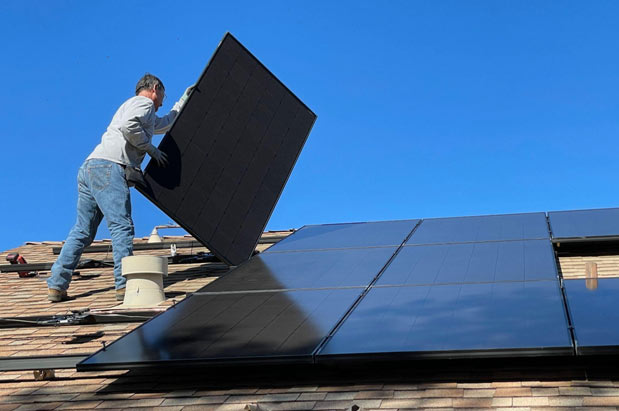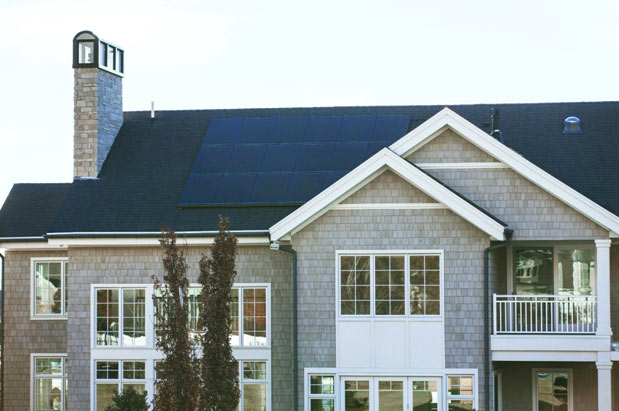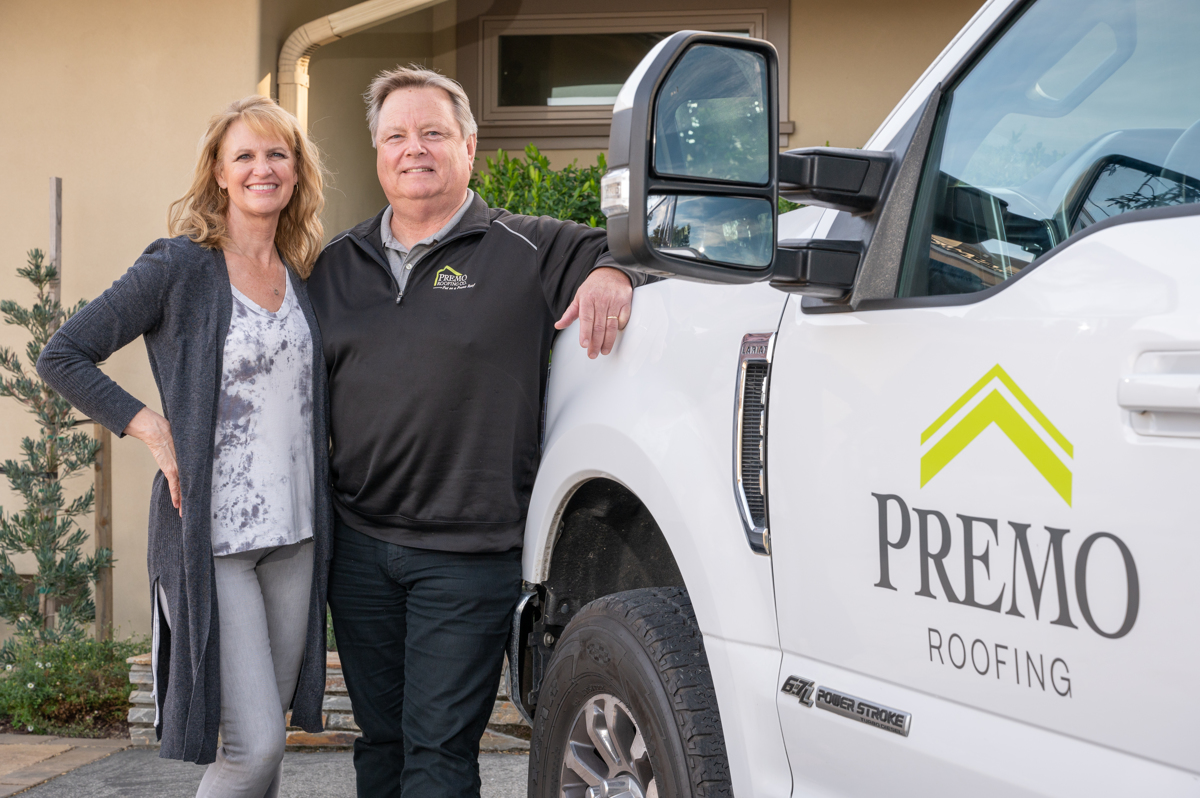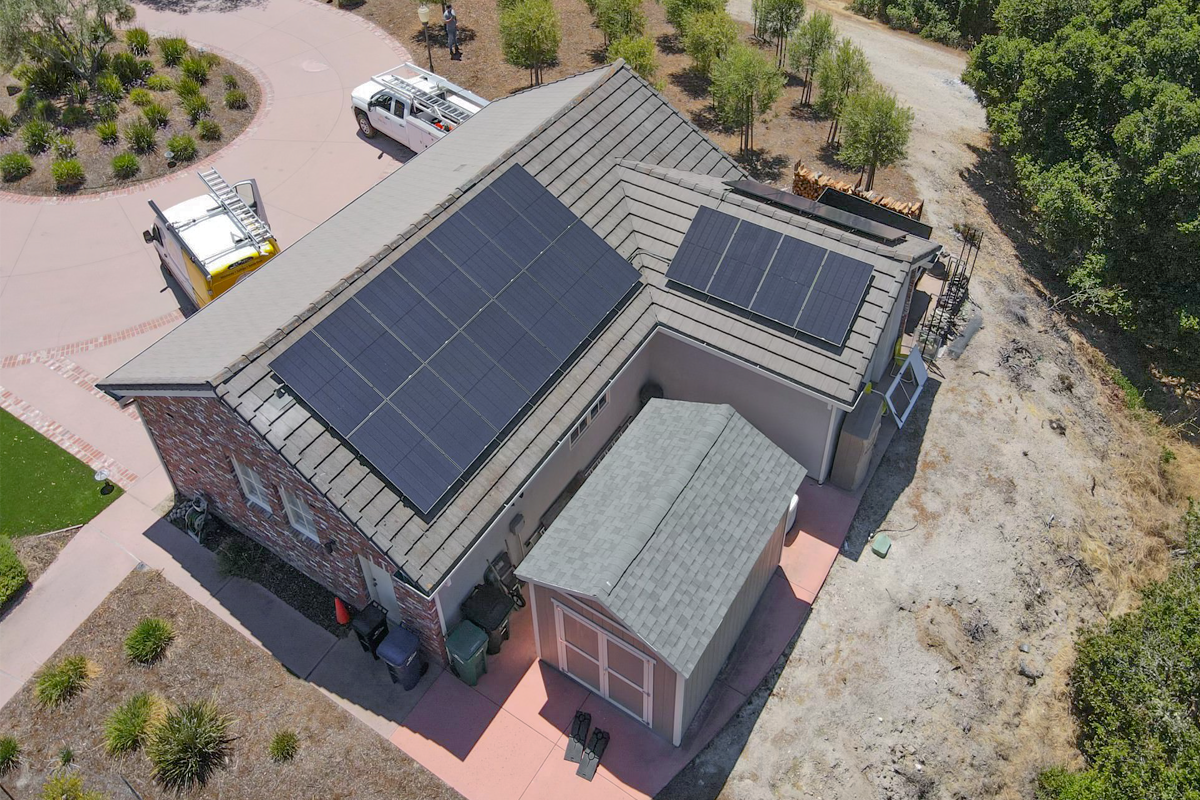
Clean energy is all the rage in 2023, with citizens constantly on the lookout for ways to curb their nonrenewable energy consumption. For homeowners, this inevitably leads to the discussion of whether or not to install solar panels.
While solar panel innovations have come a long way in recent years and can significantly reduce the electric bills for a household, the fact remains that they will probably have to be installed on your roof. With that said, some roofing materials are better than others for solar installation.
Keep reading to find out everything you need to know about the best roofing options for solar panels.
Asphalt Roofing

Asphalt is one of the most popular roofing materials, and it has the benefit of being a strong material to pair with solar panels.
Thanks to outstanding flexibility, asphalt shingles are not easily damaged during the solar installation process. The installation technician simply has to mount studs to the roof, add the solar panels to the studs, and apply flashing between the studs and roof shingles to prevent water from settling between them.
In addition to ease of installation, the dark color of most asphalt products blends well with the PV panels, making the solar panels less noticeable than on other types of roofs.
Metal Roofing
Metal is another premium roofing material to pair with solar panels. It is a tough, durable roofing option that allows for simple installation of mounting studs. In fact, metal roofs with raised seams allow technicians to install the panels directly to the roof without the need for studs or flashing, providing the most minimal installation process of any roofing material.
Metal roofs also promote strong aesthetics when paired with solar panels, as the metal-on-metal look is more natural than for other roofing types. If there is any downside to choosing a metal roof for solar installation, it is that metal roofs have a relatively low thermal mass, so it may be worthwhile to consider the r value of polyiso roof insulation to pair with a metal roof to help prevent quick temperature swings during times of heavy sun.
Slate Roofing
Slate and any other types of stone or concrete tiles are another solid choice to pair with solar panels. While the panels will be a bit more noticeable on these types of stately roofing products, they provide a solid, fire-resistant base that will keep the solar panels safe and secure.
The one caveat with stone roofing products is that an additional step is required for installation, which will probably increase the cost of the system. The installation technicians will have to remove the sections of the roof where the feet of the solar panels will rest, as masonry tiles are a bit brittle and could crack if attached directly to the studs. So while removing small areas of the roof to attach the panels is more than doable, it does require some extra labor that will increase the total cost of the project.
Composite Roofing

Speaking of fire resistant roofing options, it is important to remember that fire resistance should be a top consideration when installing solar panels. Although fires are not common, PV cells use sunlight to produce electricity, and any time there is a problem with any type of electrical system, the threat of fire presents itself.
To this effect, composite roofing products manufactured from a combination of asphalt, fiberglass, and other types of synthetic polymers provide the highest fire resistance on the market. Despite this elite fire resistance that rivals metal and slate, composite roofing is as lightweight, flexible, and easy to work with as basic asphalt shingles, making composite roofing a top product on which to fasten solar mounting studs.
Materials to Avoid
Any article on the best roofing options for solar wouldn’t be complete without acknowledging the materials that you definitely want to avoid.
At the top of the list is wood shakes. While this rustic product offers homeowners some benefits in sunny areas, solar compatibility is not one of them. They present very high fire risk and crack easily, making it difficult to secure solar panels for the long run. In addition, they must be regularly treated to maintain their protective properties, and the presence of solar panels can make this process difficult.
Another product to avoid is vinyl or PVC roofing shingles. While these materials offer solid fire resistance, they become brittle in the face of extended UV exposure, putting the solar panels’ long-term security at risk.
Flat or Pitched Roof?
In general, a pitched roof is better for installing solar panels. Not only can you get more advantageous angles for capturing sunlight, but the roof’s slope and cricket roof around the chimney prevent water from standing on the roof.
In flat roofs, the standing water in, around, and under solar panels can lead to leakage. While you can add solar panels to a flat roof, understand that you will need to have them installed at an angle, and that you will probably need to clean your roof more frequently to prevent puddling water.
The Bottom Line: The Best Roofing Options for Solar Panels
Solar panels pair extremely well with asphalt, metal, masonry, and composite roofs thanks to these products’ strong fire resistance and durability.
They do not work well with wood or vinyl roofs, and it is preferable to install them on a pitched roof as opposed to a flat roof. With this in mind, you can make the necessary adjustments to make your home as solar-friendly as possible!
Andrew Wesley is a freelance writer that loves sharing his knowledge and expertise on roofing projects and materials. He lives in Atlanta, Georgia where he enjoys spending time with his wife and working on projects in his spare time. Andrew’s work as a freelance writer can be found on Building Product Advisor, a new construction industry resource.




